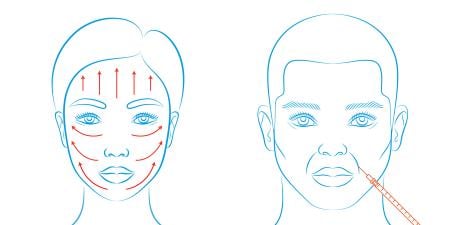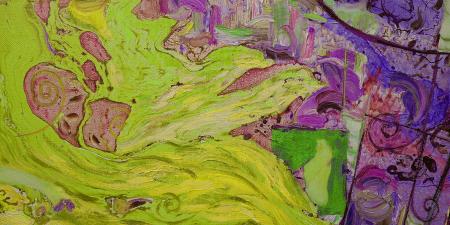Attention deficit hyperactivity disorder (ADHD) is the most common neurobehavioral disorder of childhood and among the most prevalent chronic health conditions affecting school-age children. ADHD is characterized by some combination of hyperactivity, impulsivity and inattention. Children with ADHD may experience functional difficulties in every aspect of their lives, including behavior, academic achievement, and interpersonal relationships with family and peers [1]. In the long term, the combination of frustration, rejection and failure can have a serious detrimental effect on developing self-esteem [2].
With the establishment of more comprehensive diagnostic criteria that identify the various subtypes, estimates now place the childhood prevalence of ADHD at 4 to 8 percent [3]. Once thought to affect boys more than girls, the disorder now appears not to discriminate along gender lines. While, indeed, more boys than girls are diagnosed with ADHD, girls are being identified more often now than in the past, particularly in the inattention subtype. Possibly girls are less likely to be recognized and diagnosed with ADHD because their behavior is generally less overactive and disruptive. ADHD was originally thought to be a condition that resolved in adolescence, but new evidence suggests that this is not the case for the majority of children. For up to 65 percent of patients diagnosed in childhood, the symptoms persist into the teenage years and, for some, into adulthood [4].
Diagnosis
The American Academy of Pediatrics (AAP) has developed diagnostic guidelines based on the Diagnostic and Statistical Manual of Mental Disorders, 4th edition (DSM-IV) criteria [5]. They urge that all children between the ages of 6 and 12 who present with symptoms of inattention, hyperactivity, impulsivity, academic underachievement or behavior problems be evaluated for ADHD. The criteria for establishing an ADHD diagnosis are as follows:
Either A or B
A. Six or more of the following symptoms of inattention have persisted for at least six months to a degree that is maladaptive and inconsistent with developmental level:
Attention deficit
- Often fails to give close attention to details or makes careless mistakes in schoolwork, work or other activities.
- Often has difficulty sustaining attention in tasks or play activities.
- Often does not seem to listen when spoken to directly.
- Often does not follow through on instructions and fails to finish schoolwork, chores or duties in the workplace (not due to oppositional behavior or failure to understand instructions).
- Often has difficulty organizing tasks and activities.
- Often avoids, dislikes or is reluctant to engage in tasks that require sustained mental effort (such as schoolwork or homework).
- Often loses things necessary for tasks or activities (e.g., toys, school assignments, pencils, books or tools).
- Is often easily distracted by extraneous stimuli.
- Is often forgetful in daily activities.
B. Six or more of the following symptoms of hyperactivity-impulsivity have persisted for at least six months to a degree that is maladaptive and inconsistent with developmental level:
Hyperactivity
- Often fidgets with hands or feet or squirms in seat.
- Often leaves seat in classroom or in other situations in which remaining seated is expected.
- Often runs about or climbs excessively in situations in which it is inappropriate (in adolescents or adults, may be limited to subjective feelings of restlessness).
- Often has difficulty playing or engaging in leisure activities quietly.
- Is often "on the go" or often acts as if "driven by a motor."
- Often talks excessively.
Impulsivity
- Often blurts out answers before questions have been completed.
- Often has difficulty awaiting turn.
- Often interrupts or intrudes on others (e.g., interrupts conversations or games).
Along with the DSM-IV criteria, the symptoms must have been present before the age of seven, be found in two or more settings, and result in significant impairment in social, academic or occupational functioning. The symptoms must not occur exclusively during the course of a developmental disorder or be better accounted for by another mental disorder.
The AAP also requires that parents, caregivers and teachers provide direct evidence regarding the core symptoms of ADHD in various settings, the age of onset, duration of symptoms and degree of impairment. Evaluation of the child with ADHD should always include assessment for co-existing conditions [1]. Two-thirds of children with ADHD have at least one other psychiatric disorder, the most common of which are depression, anxiety disorders, conduct disorders, oppositional-defiant disorders and learning disabilities [6].
Treatment
ADHD is currently considered to be a persistent and chronic syndrome for which no cure exists. Treatment should begin early to avert as much of the academic struggle, family conflict and social ostracism as possible and to avoid the long-term development of anxiety, depression and diminished self-esteem [7]. A multimodality approach to treatment that emphasizes both behavioral interventions and pharmacotherapy is considered optimal. Combined therapy is found to be especially useful for children with comorbid anxiety, depression or stressed family situations. It may also reduce the medication doses needed for symptomatic control [8].
Behavioral therapy—most of which relies on a system of positive and negative reinforcements—consists of interventions designed to alter a child's behavior at home and school. With time and consistent, repeated application, these interventions are thought to gradually reshape a child's behavior.
Pharmacotherapy consists of short-term and long-term stimulants. The active ingredients in the majority of both these formulations are methylphenidate (Concerta, Ritalin) and dextroamphetamine (Dexedrine). It is believed that stimulants work to minimize ADHD symptoms by altering the levels of neurotransmitters in the brain. Eight out of 10 children show improvement on stimulants. For children with inattention alone, low doses are generally sufficient. Higher doses may be required for a diagnosis of combined attention deficit and hyperactivity [6].
Conclusion
ADHD is a chronic disorder that affects a substantial number of American children. Untreated, the symptoms of ADHD can make the developmental tasks of childhood nearly impossible and place children at increased risk for depression, school failure and substance abuse as they grow older. The guidelines for establishing a diagnosis of ADHD encourage the use of DSM-IV criteria, rely on information obtained about symptoms from a variety of settings and sources, and highlight the need to evaluate for co-existing conditions. Safe and effective treatment that utilizes both behavioral modifications and stimulant medications is available and can dramatically alter the negative course of ADHD.
References
- Herrerias CT, Perrin JM, Stein MT. The child with ADHD: using the AAP clinical practice guideline. Am Fam Physician. 2001;63(9):1803-1810.
-
National Institute of Mental Health. Attention deficit hyperactivity disorder. http://www.nimh.nih.gov/publicat/adhd.cfm. Accessed March 2007.
-
American Academy of Pediatrics. Subcommittee on Attention-Deficit/Hyperactivity Disorder and Committee on Quality Improvement. Clinical practice guideline: treatment of the school-aged child with attention-deficit/hyperactivity disorder. Pediatrics.2001;108(4):1033-1044.
- Wolraich ML, Wibbelsman CJ, Brown TE, et al. Attention-deficit/hyperactivity disorder among adolescents: a review of the diagnosis, treatment, and clinical implications. Pediatrics. 2005;115(6):1734-1746.
-
American Psychiatric Association. Diagnostic and Statistical Manual of Mental Disorders. 4th ed. Washington, DC: American Psychiatric Association; 1994.
- Ravenel SD. Practice parameter for the use of stimulant medications in the treatment of children, adolescents, and adults. J Am Acad Child Adolesc Psychiatry. 2002;41(10):26S-49S.
-
Wender PH, Wolf LE, Wasserstein J. Adults with ADHD: an overview. Ann NY Acad Sci. 2001;931:1-16.
-
Multimodal Treatment Study of Children with ADHD (MTA) Cooperative Group. A 14-month randomized clinical trial of treatment strategies for attention-deficit/hyperactivity disorder. Arch Gen Psychiatry. 1999;56(12):1073-1086.



